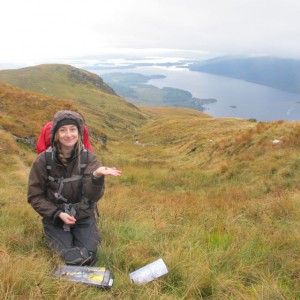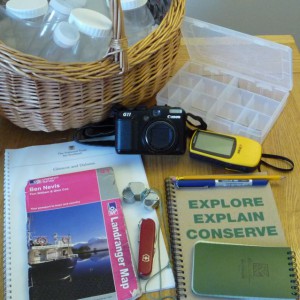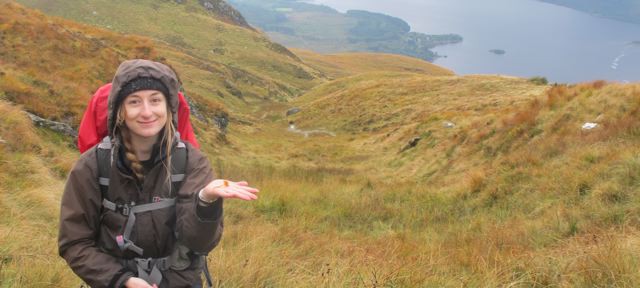
Only during several train journeys have I been able to steal moments for drafting this blog entry, as we’re well into autumn now and apprenticeship life has taken a turn for the hectic. I have been immersed in the weird world of fungi over the past weeks and the season isn’t over yet.
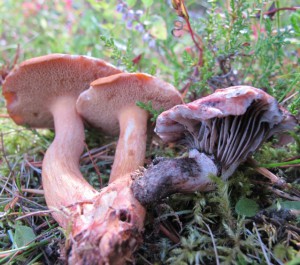
Strange relationships! The Rosy Spike, Gomphidius roseus (right) is thought to a parasite. It is often found fruiting next to the Bovine Bolete, Suillus bovinus, and taps into the existing mycorrhizal relationship between the fungus and Pine.
In September I attended a week-long course at Kindrogan with field mycologist Liz Holden. This was an intensive introduction to fungi, with daily collecting trips around the Highlands and long evenings at the microscope. Here, I learned that you can use four of your five senses to identify fungi (I haven’t yet heard them singing to me). They are a large kingdom, and so various in their forms that it’s impossible not to be surprised and delighted by them. Indeed, as well as the various colours and textures of fungal fruiting bodies, there are wacky microscopic characters that seem to have no function except to help us mycologists tell one from another. Smell is also an important tool: walking through a woodland you can ‘get’ coconuts and curry, aniseed and almonds. In the uplands there are mushrooms to find that smell of honey, garlic and balloons. Tasting mushrooms in the name of identification is quite common, and some taste fiery hot! This is lots of fun, but only taste your fungi, and spit out your sample. Take care not to cook and eat something unless you are absolutely sure you have named it correctly.
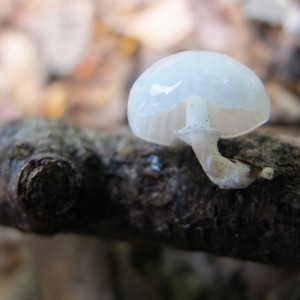
The Porcelain Fungus, Oudemansiella mucida, growing on a twig. An edible species, once you wash off the glutinous cap layer.
Following my time at Kindrogan, I went out on mini-expeditions to see some of the most popular NTS countryside properties and iconic mountain scenery. I made it to Glencoe, Ben Lomond and again to Grey Mare’s Tail. Feeling more equipped with fungi knowledge, I searched for little upland mushrooms and aimed to identify my finds. Although I am learning so much as an apprentice, mycology is a lifetime of work: The learning curve is still as steep as the terrain I’ve been ambling over. It can be easy to forget where I am with eyes always to the ground. Looking up to Glencoe from the grassy slopes of Meall Mor, however, I felt a great sense of place and heightened desire to study and protect our special habitats and landscapes.
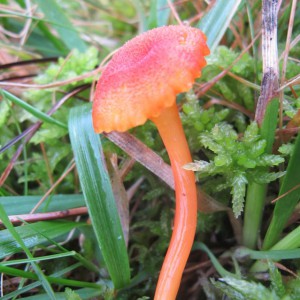
Hygrocybe cantharellus, or the Goblet Waxcap. This wee orange mushroom has a very scurfy cap, look closely!
There is still time to get outside and look for mushroomy wonders. I thought I’d share what I’ve found is best to take along when collecting fungi, but there are plenty of tips to pick up from your local fungus group! For foraying, I bring along a basket, though many use a garden trug for carrying collections. To keep your specimens separate and safe, plastic tubs are useful, but I opt for sciencey-looking test tubes or even a small fishing tackle box. A penknife or mushroom knife is best for prising fungi from the ground or with substrate intact. A waterproof notebook is essential for recording characters that are transient or lost upon drying, next to a grid reference for each find. A camera can also capture characters for later reference, remembering to take several good macro shots of the cap, gills and stem.
For now,

